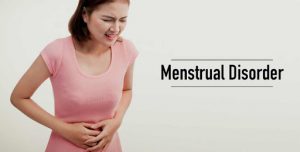
Nội dung bài viết / Table of Contents
This post is also available in: Tiếng Việt (Vietnamese)

Menstrual cycles often come with a variety of uncomfortable symptoms leading up to your period.
Premenstrual syndrome (PMS) encompasses the most common issues, such as mild cramping and fatigue, but the symptoms usually go away when your period begins.
More serious menstrual problems may also occur. Menstruation that is too heavy or too light, or the complete absence of a cycle, may suggest that there are other issues that are contributing to an abnormal menstrual cycle.
Remember that a “normal” menstrual cycle means something different for every woman. A cycle that’s regular for you may be abnormal for someone else.
It’s important to stay in tune with your body and to talk to your doctor if you notice any significant changes to your menstrual cycle. There are several different menstrual problems that you may experience.
Menstrual disorder is extremely common. It can affect patients at any age. It can be managed by reducing your risk factors. Please discuss with your doctor for further information.
The common symptoms of menstrual disorder are:
Premenstrual syndrome
PMS occurs one to two weeks before your period begins. Some women experience a range of physical and emotional symptoms. Others experience few symptoms or even none at all. PMS can cause:
Heavy periods
Another common menstrual problem is a heavy period. Also called menorrhagia, heavy periods cause you to bleed more than normal. You may also have your period for longer than the average of five to seven days.
Absent periods
In some cases, women may not get their period. This is called amenorrhea. Primary amenorrhea is when you don’t get your first period by age 16. This may be caused by an issue with the pituitary gland, a congenital defect of the female reproductive system, or a delay in puberty. Secondary amenorrhea occurs when you stop getting your regular periods for six months or more.
There may be some symptoms not listed above. If you have any concerns about a symptom, please consult your doctor.
If you have any signs or symptoms listed above or have any questions, please consult with your doctor. Everyone’s body acts differently. It is always best to discuss with your doctor what is best for your situation.
Menstrual disorder can have many different causes, including:
There are many risk factors for menstrual disorder, such as:
The information provided is not a substitute for any medical advice. ALWAYS consult with your doctor for more information.
Your doctor will want to know about your symptoms and for how long you’ve been experiencing them. It may help to come prepared with notes on your menstrual cycle, how regular it is, and any symptoms you have been experiencing. Your doctor can use these notes to help figure out what is abnormal.
In addition to a physical exam, your doctor will likely do a pelvic exam. A pelvic exam allows your doctor to assess your reproductive organs and to determine if your vagina or cervix is inflamed. A Pap smear will also be performed to rule out the possibility of cancer or other underlying conditions.
Blood tests can help determine whether hormonal imbalances are causing your menstrual problems. If you suspect that you may be pregnant, your doctor or nurse practitioner will order a blood or urine pregnancy test during your visit.
Other tests your doctor may use to help diagnose the source of your menstrual problems include:
The type of treatment will depend on what’s causing the problems with your menstrual cycle. Birth control pills can relieve symptoms of PMS, as well as regulate heavy flows. If a heavier or lighter than normal flow is related to a thyroid or other hormonal disorder, you may experience more regularity once you start hormone replacements.
Dysmenorrhea may be hormone related, but you may also require further medical treatment to address the problem. For example, antibiotics are used to treat pelvic inflammatory disease.
Read more post:
What are some lifestyle changes or home remedies that can help me manage menstrual disorder?
The following lifestyles and home remedies might help you cope with menstrual disorder:
If you have any questions, please consult with your doctor to better understand the best solution for you.
Sources: